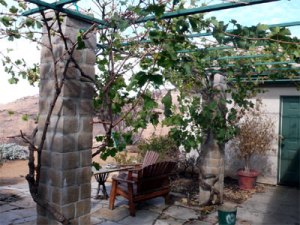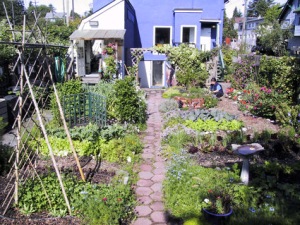This is the first paragraph of wikipedia’s definition of planned obsolescence:
Planned obsolescence or built-in obsolescence[1] is the process of a product becoming obsolete and/or non-functional after a certain period or amount of use in a way that is planned or designed by the manufacturer.[1] Planned obsolescence has potential benefits for a producer because the product fails and the consumer is under pressure to purchase again, whether from the same manufacturer (a replacement part or a newer model), or from a competitor which might also rely on planned obsolescence. [1] The purpose of planned obsolescence is to hide the real cost per use from the consumer, and charge a higher price than they would otherwise be willing to pay (or would be unwilling to spend all at once).
I had a 1940-something Maytag wringer washing machine that I bought in the 80’s at a garage sale for $5.
I used it for the next 12 years. The only part I had to replace was the motor belt that would wear out. Our local appliance dealer had them in stock. Planned obsolescence was NOT the marketing strategy for this company in the ’40s.
I dare say the opposite strategy was the intent. The idea back in the beginning was to get people to buy their product. Innovation was key; that and offering a product that filled a need. One of the main selling points was longevity for both the product and the company that was selling it. Start-up companies had to build a reputation and a name for themselves. Quality, durability, and reliability were the hallmarks. Maytag has been around since 1911. To write this post I checked out the History of Maytag, which was very interesting. F.L. Maytag had a great philosophy and created quite a few firsts for his company.
Quality and trust were paramount. Fredrick Louis Maytag 1909 said, “There is a factor that can not be measured in dollars and cents…the spirit and love that a true craftsman holds for his job.” If this is any indication of what it takes to be a success—and Maytag was very successful—I am hard-pressed to find anything comparable in today’s marketplace.
I am reminded on a daily basis how planned obsolescence plays a major role in my life, a constant reminder of things that just give out or give up, just quit or malfunction because of some minute computer chip, glitch, or flaw. I can not reasonably expect that my laptop, or even my stovetop, is going to behave in a reliable manner given all the variables that sustain it.
When I was using the old Maytag washer I always had several spare belts on hand. If one morning I needed to change the belt it was not an event that involved calling or making an appointment with a “genius”, getting into my car and driving somewhere, find and pay for a parking space, wait until my name is called only to learn that they will have to keep it for a week to “reprogram it.”
If I needed to change the belt I went into the junk drawer where the belt and pliers were. I loosened one nut, slid the old belt off, put the new belt on, tightened the nut, put the pliers away and I was good to go. The part cost me $2.59 which I had on hand and 15 minutes of my time. It was as good as new.
Why can’t today’s products and technology make things that last? Why does it have to be sooo expensive and so hard to maintain and keep up? I had to throw my first laptop away because the screen started to get lines in it. The hard drive was fine. It would cost over $800 to replace the screen. I replaced the whole computer. I could change the spark plugs, oil and pretty much maintain my vehicles which made life a lot easier and less expensive for me. Now I can’t even find the spark plugs on the newer vehicles and it takes special computerized equipment I don’t own to talk to the on-board computer to find out where the spark plugs are. I have a 1982 Toyota pickup. It runs great. Everything works great but it will not pass smog. Why? The one and only computer chip that sends air to the carburetor is broken. The chip cost $230 and the labor is $200. I can’t do a thing about this. It cost me $90 to have a mechanic tell me what the problem was. The State says throw the truck away. It is not worth fixing. Again, what a waste. But that is what planned obsolescence is all about isn’t it? I grew up with an old saying you do not hear much anymore, Waste not, want not. It made sense back then and I think it still does.
A disposal, throw-away, get-a-new-one mentality, is what is making the world go round. I think I liked it better when things were built to last, workers were proud of their work, and companies planned on being around as a trusted reliable source of goods and services for a long time.
To add insult to injury I tried to extend the warranty on my new computer. The company said no, you missed the one month window to renew. We don’t want your insurance money. This does not give me a lot of confidence. They know something I don’t. They know I will be back in 3 years to replace this one. I will have to pay 4 times as much for a new computer instead of them repairing the old one on my extended warranty. In the mean time every upgrade, download, which I don’t want or need, causes a chain reaction which causes more bugs, and more upgrades and things just get worse instead of better. Not like replacing a worn out belt and making it as good as new.
Like I said at the beginning. And then, of course, there’s…
Style obsolescence
Marketing may be driven primarily by aesthetic design. Product categories in which this is the case display a fashion cycle. By continually introducing new designs and retargeting or discontinuing others, a manufacturer can “ride the fashion cycle”. Examples of such product categories include automobiles (style obsolescence), with a strict yearly schedule of new models, and the almost entirely style-driven clothing industry (riding the fashion cycle) and the mobile phone industries with constant minor feature ‘enhancements’ and restyling.
Don’t get me started on the switch from analog to digital. This stuff drives me crazy.
Read Full Post »













 The natives are very low maintenance. They can be very showy and spectacular like our California Lilac, Ceanothus, left,
The natives are very low maintenance. They can be very showy and spectacular like our California Lilac, Ceanothus, left,  or low and inconspicuous like Pacific Mist Arctostaphylos, right.
or low and inconspicuous like Pacific Mist Arctostaphylos, right. Pacific Mist loves coastal sandy gardens where it grows one foot high and 6-8 feet across. Then there are the fragrant varieties for your smelly garden. California Mock Orange (Philadelphus lewisii) center. Thumbnail pictures from
Pacific Mist loves coastal sandy gardens where it grows one foot high and 6-8 feet across. Then there are the fragrant varieties for your smelly garden. California Mock Orange (Philadelphus lewisii) center. Thumbnail pictures from 







 Black, stripped, variegated, running and clumping bamboo for looks. Ginger, comfrey, borage, violets for all those reasons. My potted veggie garden this year is a Cherokee purple tomato. I put my basil right in there with the tomato and everyone is happy. I have onions and garlic in a window box planter. And the parsley is very happy in with the clover, chia and alfalfa. I grab a handful of this and mix it in the blender for a green smoothie.
Black, stripped, variegated, running and clumping bamboo for looks. Ginger, comfrey, borage, violets for all those reasons. My potted veggie garden this year is a Cherokee purple tomato. I put my basil right in there with the tomato and everyone is happy. I have onions and garlic in a window box planter. And the parsley is very happy in with the clover, chia and alfalfa. I grab a handful of this and mix it in the blender for a green smoothie.
 I use good organic soil, compost, mixed with a lot of coffee grounds I have collected from coffee houses. Coffee grounds make great drainage and the worms love it. Keep the soil light and airy and enough holes so the plants are never sitting in water. Only marsh plants like wet feet.
I use good organic soil, compost, mixed with a lot of coffee grounds I have collected from coffee houses. Coffee grounds make great drainage and the worms love it. Keep the soil light and airy and enough holes so the plants are never sitting in water. Only marsh plants like wet feet.








You must be logged in to post a comment.